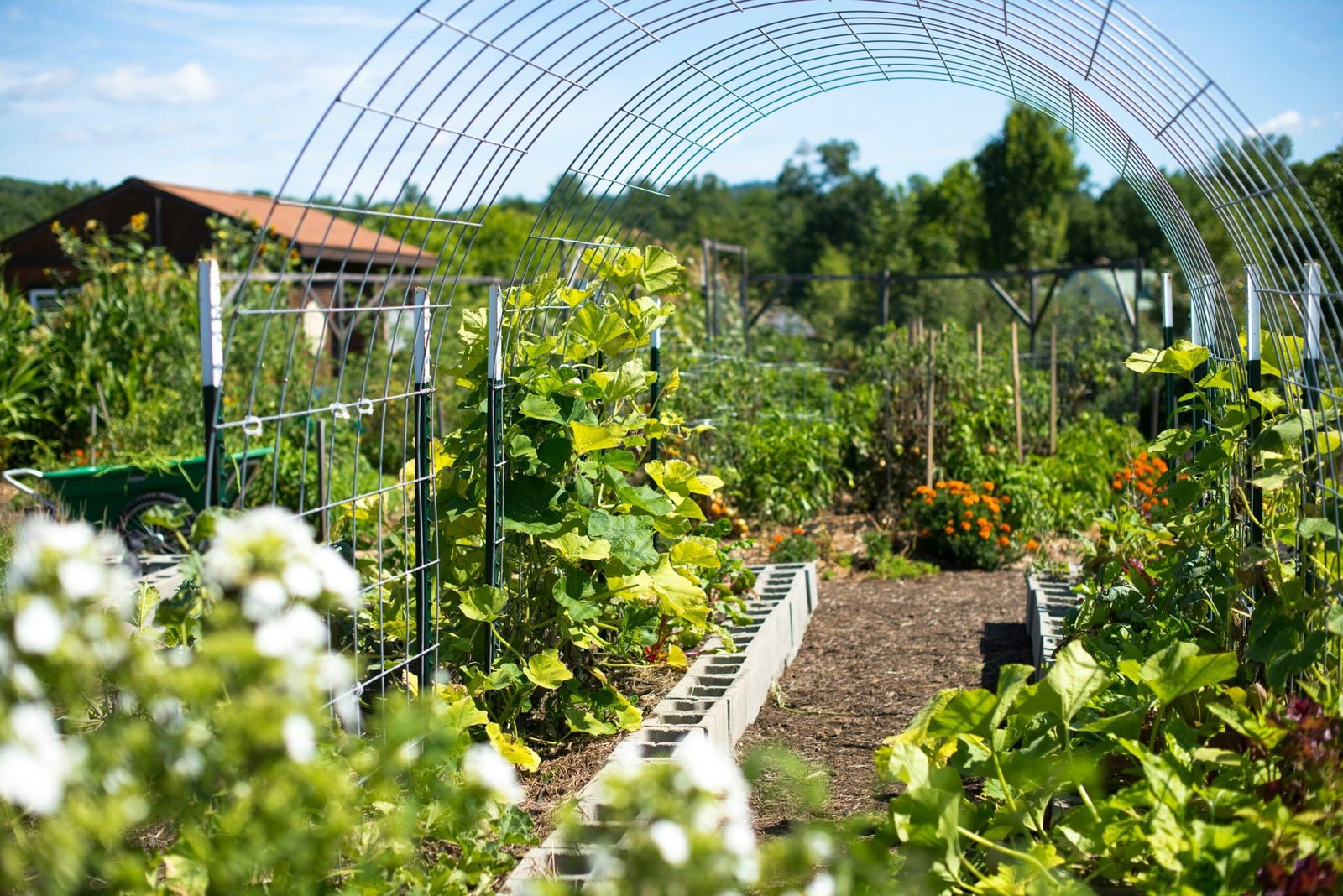In today’s unpredictable world, creating a self-sufficient homestead offers security and peace of mind. This guide outlines a practical approach for transforming any property into an independent stronghold. From optimizing land use and renewable resources to planning resilient infrastructure, these steps will help you build a homestead that can thrive on its own for years to come.
Self-Sufficient Homestead Checklist: Organic Gardening & Food Production
One of the most essential aspects of self-sufficiency is food production. Homesteaders can produce up to 80% of their food with a well-planned organic farming setup. Here’s how to get started:
Start Small and Scale Up
- 3×6 Raised Beds: Begin with a manageable space like a 3×6 raised bed. This compact gardening method allows for high-yield crops such as tomatoes, peppers, and salad greens.
- Container Gardening: If you’re limited on space, container gardening can be an effective alternative for growing vegetables and herbs.
Focus on Soil Health
Good soil is the foundation of a successful garden. To optimize soil quality:
- Soil Preparation: Layer compost, manure, and organic matter to enrich the soil and improve plant growth.
- Compost Schedule: Apply compost twice a year to keep nutrient levels high and reduce the need for external fertilizers.
Essential Tools and Maintenance
- Gardening Tools: A few basic tools like trowels, pruners, and buckets are essential for maintaining your garden.
- Efficient Planning: A well-organized approach minimizes trial and error, making gardening a more predictable and rewarding experience.
Additionally, it’s important to consider how you can supplement your gardening efforts with essentials like emergency food and survival gear. Preparedness products like those offered by My Patriot Supply can help ensure that your homestead is equipped for the unexpected. Whether you need storage solutions, long-lasting food supplies, or water filtration systems, having the right resources on hand can provide peace of mind as you grow your self-sufficient lifestyle.
By following these steps, you can establish a thriving food production system that provides for your family, reduces dependency on external sources, and promotes sustainability.
Self-Sufficient Homestead Checklist: Shelter, Animal Care & Infrastructure Planning
Creating a sustainable homestead requires careful infrastructure planning. Here’s how to build a solid foundation for shelter and animal care:
Evaluate Existing Structures
- Assess Current Buildings: Evaluate the condition of existing structures to determine if they can be repurposed or expanded for homestead use.
- Plan for Animal Shelters: Properly position barns and animal pens to ensure that your animals have adequate space and access to food and water.
Sustainable Construction Practices
- Use Recycled Materials: Repurpose materials like old pallets, fencing, and timber for building projects. This reduces costs and environmental impact while enhancing sustainability.
- Strategic Compost Bin Placement: Position compost bins away from living areas but within easy reach for regular use. This helps maintain a clean and functional homestead layout.
Plan for Maintenance
- Ongoing Repairs: Keep a maintenance schedule to anticipate and address any repairs needed for shelters, animal care facilities, and other structures.
- Resource Allocation: Plan ahead to ensure you have the necessary resources, such as building materials and tools, for future expansion.
A well-planned homestead infrastructure not only supports shelter and animal care but also lays the groundwork for long-term sustainability and resilience.
Final Thoughts
Building a self-sufficient homestead requires careful planning and ongoing effort, but the rewards are well worth it. By focusing on organic food production, shelter, infrastructure, and renewable resources, you can create a homestead that thrives independently.
This comprehensive checklist serves as a roadmap for assessing land, optimizing energy use, and ensuring that every part of your homestead contributes to your long-term self-sufficiency. Embrace the journey and take control of your living environment, transforming your property into a sustainable and resilient stronghold.
FAQ
Q: How many acres are needed for a self-sufficient homestead?
A: A small family homestead typically requires 2-5 acres to support food production, livestock, and shelter. Larger operations may need 5-10 acres.
Q: What essential elements should a homestead include?
A: Key elements include a garden area, water source, energy system, composting zone, animal housing, and storage facilities. Each element plays a vital role in creating an efficient homestead.
Q: How can someone start planning a homestead layout?
A: Begin by evaluating land characteristics such as sun exposure, water drainage, and slopes. Organize structures and zones for gardening, animal care, and living spaces based on accessibility and resource management.
Q: What type of food production system works best for beginners?
A: A 3×6 raised bed garden with container plants for high-yield crops like tomatoes and peppers is perfect for beginners. It’s easy to manage while providing a substantial food supply.
Q: What are the key considerations for homestead water management?
A: Install a drip irrigation system with emitters spaced 8-12 inches apart. Monitor soil moisture at a depth of 1-2 inches to ensure optimal water conservation.
Q: How should seasonal planning be approached on a homestead?
A: Plan tasks by season: plant in the spring, maintain in the summer, harvest in the fall, and use winter for planning and organizing. Learn from each season to improve the next cycle.
Q: What infrastructure elements need immediate attention when starting?
A: Focus on essential structures like storage areas, animal shelters, and compost bins. Position them strategically for efficiency and ease of use.

